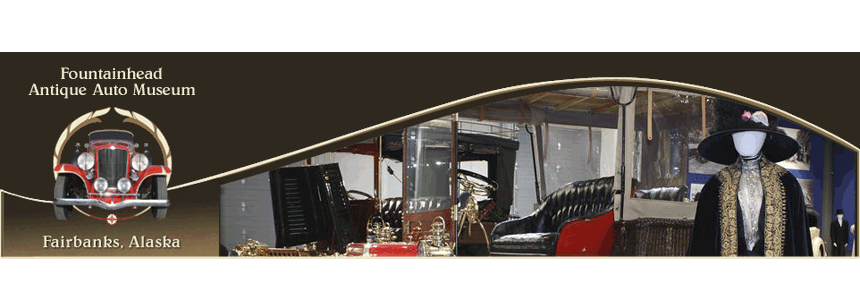© Fountainhead Antique Auto Museum
 |
| Photo by Brian Bohannon
© Fountainhead Antique Auto Museum
|
Spanish artist Mariano
Fortuny’s simple, elegant, and unconventional Delphos dress made a debut in
1907. Inspired by the chitons of ancient Greece, the design reflected the fervor
for neo-classicism seen during the Empire Revival. Indeed, with the columnar
silhouette and fluted figure, women wearing a Fortuny resembled the caryatids
of Peloponnesian architecture. Originally intended as a tea gown, the Delphos
dress was driven by the ideals of the Aesthetic movement and meant to be worn
without the elaborate underpinnings of the Edwardian period, relieving women of
their spiral steel and cotton cages (in other words: the corset). Made in one
size and easily slipped over the head, the mushroom-like pleats would expand
and adapt to the wearer’s body, providing freedom of movement and making the
Delphos dress incredibly comfortable- and incredibly risqué for the covered and
corseted Edwardian lady.

Famous for the beauty and versatility of his textiles, Fortuny handcrafted each dress (and every feature of the dress) in his Venice studio (known as “The House of the Magician”). The silks were fashioned in a variety of dyes ranging from cool greens, blues, and purples to glowing reds and golds. Many were saturated with vibrant hues, and could be dipped up to 15 times to enrich the color. Hand-blown, Venetian glass beads were commonly attached to the side seams, weighing down the lightweight silk. To further highlight a woman’s natural figure, often the gowns would also be paired with a sash, belt, or cord of satin or velvet, printed in a design inspired by various historic cultures. The snowflake of fashion, no two Fortuny gowns were identical, and he would never use the same design or color combination on any two pieces of fabric.
 The most distinctive
and unique feature of the gowns- the fine pleats- were created by a secret
process Fortuny never revealed. With silk being a temperamental textile when it
comes to pleating, Fortuny’s method somehow managed to attain a near permanent
pleat. It is believed that he finger pleated the silk when wet, possibly
holding the creases in place with rows of basting along the length of the
panel, then heat set the fabric with porcelain rollers. To help maintain the
pleats, the dresses were rolled up and stored in little hat boxes (no folding
or hanging! Woo hoo!). With each dress made out of 4-5 panels containing
between 430-450 pleats, the process was incredibly thorough, and has never been
successfully duplicated since.
The most distinctive
and unique feature of the gowns- the fine pleats- were created by a secret
process Fortuny never revealed. With silk being a temperamental textile when it
comes to pleating, Fortuny’s method somehow managed to attain a near permanent
pleat. It is believed that he finger pleated the silk when wet, possibly
holding the creases in place with rows of basting along the length of the
panel, then heat set the fabric with porcelain rollers. To help maintain the
pleats, the dresses were rolled up and stored in little hat boxes (no folding
or hanging! Woo hoo!). With each dress made out of 4-5 panels containing
between 430-450 pleats, the process was incredibly thorough, and has never been
successfully duplicated since. |
| Photo by Brian Bohannon © Fountainhead Antique Auto Museum |
Coming to Fairbanks to see the Fountainhead Antique Auto Museum and other area attractions? Support the museum by staying at one of the Fountainhead Hotels. All guests receive half-price admission to the museum!

No comments:
Post a Comment
Blogging about the Fountainhead Antique Auto Museum's latest news, adventures and research